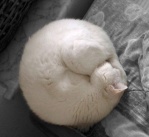meodingu

Posts : 156
Join date : 2010-09-21
 |  Subject: Speed of light Subject: Speed of light  Sun Oct 10, 2010 8:19 pm Sun Oct 10, 2010 8:19 pm | |
| Speed of light Main article: Speed of light The speed of light in a vacuum is presently defined to be exactly 299,792,458 m/s (approximately 186,282 miles per second). The fixed value of the speed of light in SI units results from the fact that the metre is now defined in terms of the speed of light. Different physicists have attempted to measure the speed of light throughout history. Galileo attempted to measure the speed of light in the seventeenth century. An early experiment to measure the speed of light was conducted by Ole Rømer, a Danish physicist, in 1676. Using a telescope, Ole observed the motions of Jupiter and one of its moons, Io. Noting discrepancies in the apparent period of Io's orbit, Rømer calculated that light takes about 22 minutes to traverse the diameter of Earth's orbit.[4] Unfortunately, its size was not known at that time. If Ole had known the diameter of the Earth's orbit, he would have calculated a speed of 227,000,000 m/s. Another, more accurate, measurement of the speed of light was performed in Europe by Hippolyte Fizeau in 1849. Fizeau directed a beam of light at a mirror several kilometers away. A rotating cog wheel was placed in the path of the light beam as it traveled from the source, to the mirror and then returned to its origin. Fizeau found that at a certain rate of rotation, the beam would pass through one gap in the wheel on the way out and the next gap on the way back. Knowing the distance to the mirror, the number of teeth on the wheel, and the rate of rotation, Fizeau was able to calculate the speed of light as 313,000,000 m/s. Léon Foucault used an experiment which used rotating mirrors to obtain a value of 298,000,000 m/s in 1862. Albert A. Michelson conducted experiments on the speed of light from 1877 until his death in 1931. He refined Foucault's methods in 1926 using improved rotating mirrors to measure the time it took light to make a round trip from Mt. Wilson to Mt. San Antonio in California. The precise measurements yielded a speed of 299,796,000 m/s. Two independent teams of physicists were able to bring light to a complete standstill by passing it through a Bose-Einstein Condensate of the element rubidium, one led by Dr. Lene Vestergaard Hau of Harvard University and the Rowland Institute for Science in Cambridge, Mass., and the other by Dr. Ronald L. Walsworth and Dr. Mikhail D. Lukin of the Harvard-Smithsonian Center for Astrophysics, also in Cambridge.[5] ???????slow food | |
|

